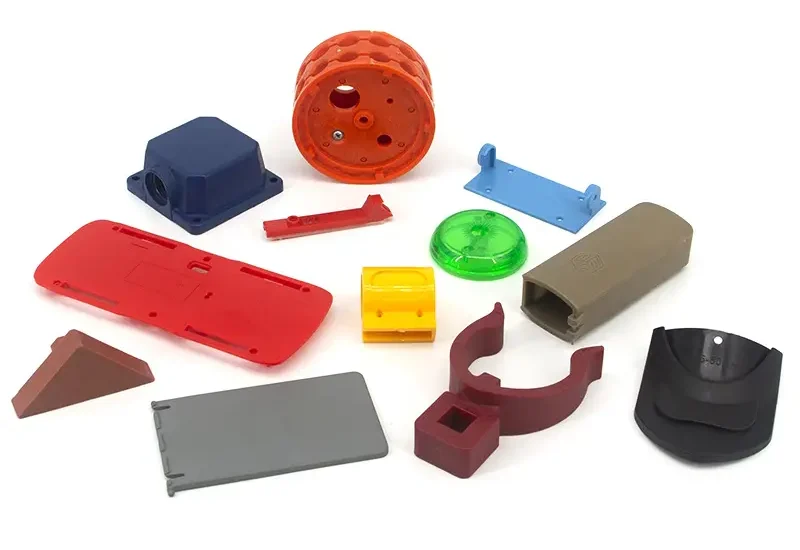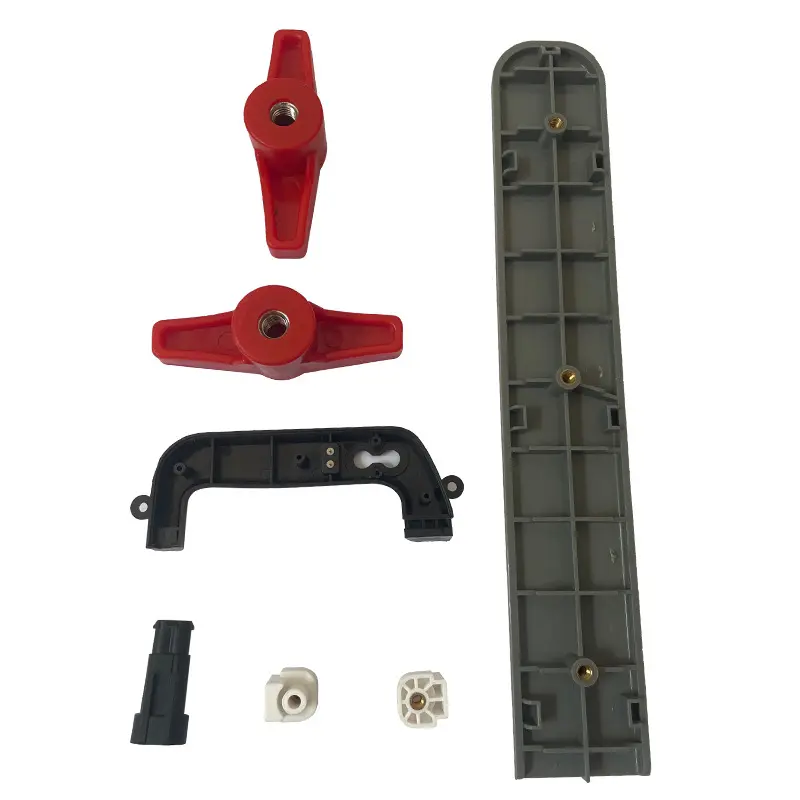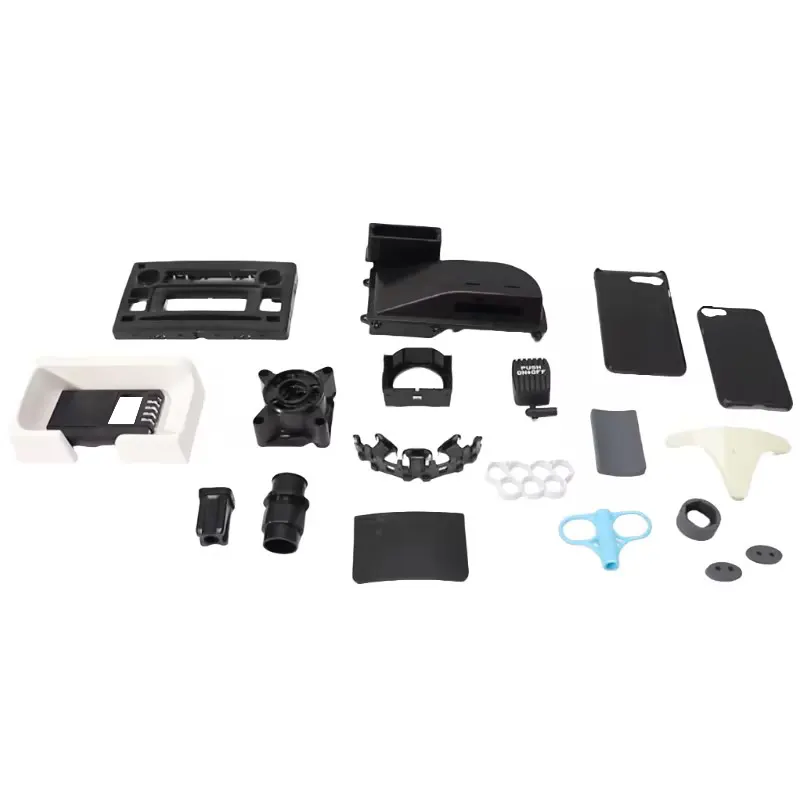- April 29, 2025
- Posted by: feinuojixie
- Category: Injection Molding News


Innovation is the lifeblood of the automotive industry, driving continuous improvement in performance, efficiency, and sustainability. Among the numerous technologies reshaping this dynamic field, injection molding automotive parts stands out as a key enabler of rapid progress. By offering unmatched versatility, precision, and scalability, injection molding is helping manufacturers meet the evolving demands of modern consumers and environmental standards. From cutting-edge electric vehicles to next-generation hybrid systems, the strategic use of injection molding is opening new possibilities for design flexibility, cost reduction, and enhanced product quality across the industry. As the automotive landscape moves toward a future defined by lightweight structures, smarter systems, and greener solutions, the role of injection molding has never been more critical.


The Evolution of Injection Molding in Automotive Manufacturing
The use of injection molding in automotive manufacturing has come a long way since its inception. Initially developed in the early 20th century for basic plastic goods, injection molding gradually found its place in the automotive sector during the 1950s and 60s. Manufacturers began replacing metal components with molded plastic parts to reduce vehicle weight and production costs. Over the decades, advances in machinery, tooling, and polymer science have made injection molding automotive parts an industry standard. Today, complex components—from dashboards to under-the-hood housings—are created with high precision, enabling engineers to push the boundaries of vehicle performance and aesthetics. The shift from conventional materials to high-performance thermoplastics marks a major turning point, allowing parts to be lighter, more durable, and better suited to modern automotive demands.
Key Advantages of Injection Molding Automotive Parts
One of the strongest reasons for the widespread use of injection molding automotive parts is the unique combination of design freedom and manufacturing efficiency. This process supports intricate geometries and fine details, which are difficult to achieve with traditional methods like die casting or stamping. Lightweight parts produced through injection molding contribute significantly to fuel efficiency and emissions reduction. Additionally, the process is ideal for high-volume production, maintaining tight tolerances and consistent quality across thousands of identical units. Manufacturers can also easily customize molds for different vehicle models, providing flexibility in design updates or limited editions. With reduced cycle times and low material waste, injection molding offers a cost-effective and sustainable solution for producing everything from interior trim to structural components.
Innovative Materials Driving the Future of Automotive Parts
Material science is at the heart of innovation in injection molding automotive parts. Modern vehicles increasingly rely on advanced polymers that combine lightweight properties with exceptional strength, thermal resistance, and chemical durability. Engineers are now developing parts with high-performance plastics such as polyamide, PEEK, and PPS to replace heavier metal components without compromising safety or reliability. Moreover, the push toward environmental responsibility has fueled the adoption of bio-based plastics and recycled materials, which help reduce the carbon footprint of vehicles. These next-generation materials are not only better for the planet but also enhance part performance—especially in demanding environments like engine compartments or electric drivetrains.
Injection Molding and the Advancement of Electric Vehicles
The rise of electric vehicles (EVs) has created new opportunities for injection molding automotive parts. In EV design, weight reduction is critical to improving battery range and energy efficiency. Injection molded components provide an ideal solution by offering lightweight alternatives for enclosures, brackets, and thermal management systems. Additionally, the compact layout of EVs requires innovative packaging solutions, many of which are achieved through complex molded shapes that maximize space utilization. Specialized plastics can also offer electrical insulation and heat resistance, key features in high-voltage systems. As EVs evolve, injection molding will continue to play a pivotal role in supporting the transition to cleaner, more efficient mobility.
How Injection Molding Supports Automotive Sustainability Goals
Sustainability is no longer optional in the automotive industry—it’s a core driver of innovation. Injection molding automotive parts contribute to this goal in several ways. First, the process generates minimal material waste, thanks to precise mold filling and the possibility of regrinding scrap for reuse. Second, many manufacturers are incorporating biodegradable, plant-based, or recycled plastics into their production lines. These materials lower dependency on fossil-based resources and help reduce overall environmental impact. Lastly, the energy efficiency of modern injection molding machines has improved significantly, allowing manufacturers to produce parts using less electricity and with smaller carbon footprints. Collectively, these advances support automakers in meeting strict environmental regulations while delivering sustainable value to consumers.


Future Trends: Smart Injection Molding Automotive Parts
Looking ahead, the future of injection molding automotive parts is being shaped by smart manufacturing and digital integration. New technologies are enabling the creation of molded components embedded with sensors, conductive pathways, and microelectronic elements. These “smart parts” can monitor wear, temperature, or structural integrity in real time, offering predictive maintenance benefits and enhancing vehicle safety. Injection molding is also merging with additive manufacturing, creating hybrid production methods that combine the strengths of both processes. With the integration of Internet of Things (IoT) capabilities and real-time production monitoring, the automotive industry is entering a new era of precision and intelligence—driven in large part by innovations in injection molding.
Conclusion
Injection molding automotive parts are at the forefront of a major transformation in the automotive industry. By offering a powerful combination of material innovation, design flexibility, production efficiency, and sustainability, this technology is enabling the creation of vehicles that are lighter, smarter, and more environmentally responsible. From conventional cars to electric mobility platforms, injection molding is not just supporting the industry—it is actively shaping its future. As manufacturers continue to explore new materials and digital capabilities, injection molding will remain a key driver of progress in one of the world’s most competitive and fast-evolving sectors.
